|
The Gloucestershire Countryside
Gloucestershire can be divided up into a number of distinctive areas, each of which
enjoys its own local characteristics.
The best known area of Gloucestershire is the Cotswolds
, a band of limestone hills covering half of the county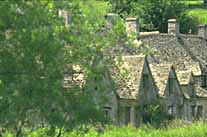 . The steep scarp edge to
the west runs down the middle of the county and the hills slope gently away eastwards to the valley of the River Thames. The Cotswolds are internationally renowned for their
architecture, with picturesque villages of mellow stone cottages nestling in the valleys. Barns and churches are built along similar lines, with massive buttresses and stone-tiled roofs. . The steep scarp edge to
the west runs down the middle of the county and the hills slope gently away eastwards to the valley of the River Thames. The Cotswolds are internationally renowned for their
architecture, with picturesque villages of mellow stone cottages nestling in the valleys. Barns and churches are built along similar lines, with massive buttresses and stone-tiled roofs.
The Royal Forest of Dean
is one of Britains ancient hunting forests with over 100 square kilometres of woodland still standing.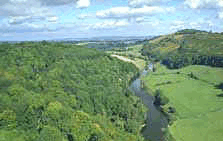 Here secretive villages fringe the forest while quiet glades of foxgloves are hidden among great oak trees. The River Wye forms the western boundary of the county with
spectacular gorges and beautiful woodlands. Here secretive villages fringe the forest while quiet glades of foxgloves are hidden among great oak trees. The River Wye forms the western boundary of the county with
spectacular gorges and beautiful woodlands.
In the Severn Vale 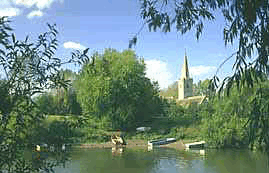 lush meadows lie alongside the lower reaches of Britains longest river, famous for its tidal bore.
Half-timbered buildings are in evidence and the curious solitude of the widening estuary is a haven for thousands of wildfowl and wading birds. lush meadows lie alongside the lower reaches of Britains longest river, famous for its tidal bore.
Half-timbered buildings are in evidence and the curious solitude of the widening estuary is a haven for thousands of wildfowl and wading birds.
The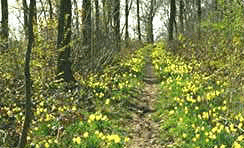 Leadon Valley
in the north-west of Gloucestershire has literary connections, including the influential Dymock Poets, and is quietly attractive in its own right. The area is well known for its
display of springtime wild daffodils. Leadon Valley
in the north-west of Gloucestershire has literary connections, including the influential Dymock Poets, and is quietly attractive in its own right. The area is well known for its
display of springtime wild daffodils.
In the south-east corner of the county two areas of flooded gravel
workings form the 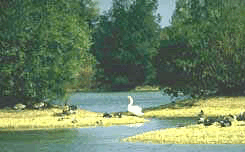 Cotswold Water Park, an increasingly important
wetland area offering a greater area of water than the Norfolk Broads. The area is a centre for water sports, nature conservation, walking, cycling and angling. Cotswold Water Park, an increasingly important
wetland area offering a greater area of water than the Norfolk Broads. The area is a centre for water sports, nature conservation, walking, cycling and angling.
Although countryside accounts for 90% of Gloucestershire the
remainder is made up of the countys towns and cities. Gloucester is the countys capital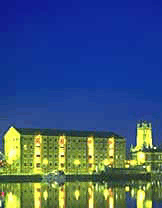 , famous for
its Norman cathedral, restored docks and fine rugby team. Close by is Cheltenham, a spa town renowned for its Regency architecture and a winner of the Britain in Bloom
competition. Tewkesbury has fine examples of half-timbered houses while Stroud has a rich industrial heritage. Coleford , famous for
its Norman cathedral, restored docks and fine rugby team. Close by is Cheltenham, a spa town renowned for its Regency architecture and a winner of the Britain in Bloom
competition. Tewkesbury has fine examples of half-timbered houses while Stroud has a rich industrial heritage. Coleford 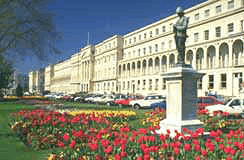 is the administra tive centre for the Forest of Dean and Cirencester fulfils the same function for the Cotswolds. is the administra tive centre for the Forest of Dean and Cirencester fulfils the same function for the Cotswolds.
|